Today’s post was convulsive in its beauty.
Previously on { feuilleton }
• Topsychopor by Roland Topor
A journal by artist and designer John Coulthart.
Today’s post was convulsive in its beauty.
Previously on { feuilleton }
• Topsychopor by Roland Topor

The marvellous is always beautiful. Anything marvellous is beautiful. In fact only the marvellous is beautiful.
George Melly (above) quoting André Breton’s declaration from the first Surrealist Manifesto, 1924
Two posts in one week—quelle surprise. This is partly because I’m trying to get WordPress to post updates to Twitter, something that hasn’t been possible for many years without going through the long-winded process of signing up as a Twitter developer. Anything that limits my involvement with Twitter’s burning café feels like a positive thing at the moment, so thoughts that I previously cast into the flames may find their expression here instead.
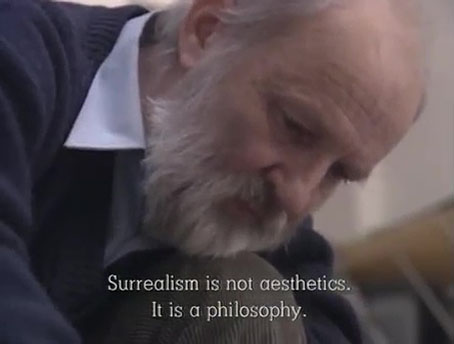
The two screengrabs are from recent re-viewings. George Melly’s short guide to Surrealism for the BBC’s Arena, and Jan Svankmajer’s equally short BBC profile have both been featured here in the past, but my recent purchase of a box of blu-rays from Svankmajer’s shop has prompted a journey back into the Surrealist praxis via whatever books and videos I have to hand. It’s been interesting looking again at René Passeron’s Encyclopedia of Surrealism (1975), a book which for many years was more interesting for the 24-page section devoted to the precursors of Surrealism, all the artist-eccentrics, architects, illustrators, Mannerists, and (especially) the Symbolists whose works I spent most of the 1980s pursuing. Today there are more threads to be followed in the Surrealist section of Passeron’s study so I’m looking forward to seeing where they lead. As for The Marvellous, the Svankmajer discs are this with and without the capital “M”. I recommend them.
Update: And the post didn’t announce itself at Twitter which isn’t so surprising; I’ll keep working at this behind the scenes. Social media is the anti-Marvellous.
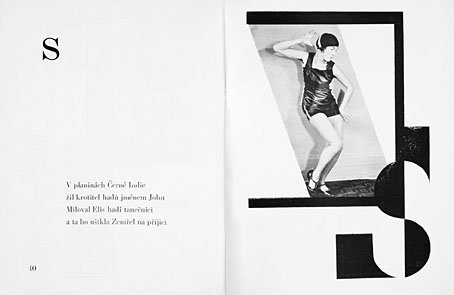
This week I’ve started working my way through the filmography of Jan Svankmajer, having finally acquired a blu-ray set of his feature films. I’ve also been reading interviews and rewatching some of the documentaries about the man and his work, which in turn prompted me to look up some of his associates and precursors among the Czech Surrealists. Prague was unusual in being a centre for the early development of Surrealism at a time when the movement (for want of a better term) was centred on Paris. André Breton encouraged this, and cultural exchanges took place, with Breton and Paul Éluard visiting Prague, while Vlatislav Netzval and his colleagues journeyed to Paris. The outbreak of war severed the connection but this also had the inadvertent effect of perpetuating the Czech brand of Surrealism by cutting off Prague from the rest of the European avant garde. While Breton and co were forced to flee to the United States and Mexico, the Czech Surrealists went underground, hiding their illicit explorations first from the occupying Nazis, then from the disapproving Communist authorities. It’s always important to bear this in mind when considering Svankmajer’s films and artwork; his Surrealism is a serious motivation with a long history in Czech and Slovak art.
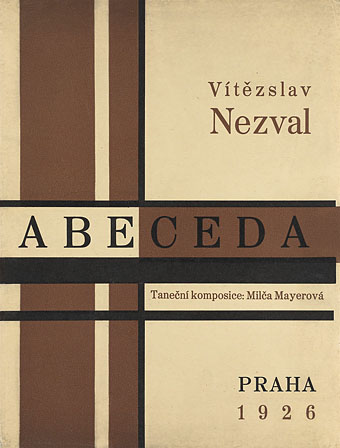
Vlatislav Netzval is best known today for being the author of Valerie and Her Week of Wonders (1935), the source novel for the cult film by Jaromil Jires. Abeceda (1926) is a much shorter work, a Modernist abecedary created by Netzval (who wrote a short verse describing each letter) with Milca Mayerová (who choreographed a series of letterform poses) and Karel Teige (who designed the book and took the photographs). I’ve not seen a complete translation of the verses but I love the page design which is like something the Bauhaus might have produced for the Modernist Children of the Future. The form being used here had a name—Poetism—a Czech variation on similar movements elsewhere such as Constructivism and Futurism but with an intention to create works accessible to all, hence the abecedary. I can imagine Milca Mayerová’s poses being animated by Svankmajer’s staccato edits although his design preferences have always been more florid and baroque. A Surrealist he may be but he also favours Jean Midolle’s Alphabet Lapidaire Monstre.
(As before, the Czech names here should include their proper accents but the coding on this blog throws up errors when it encounters certain letters. My apologies to Czech readers.)
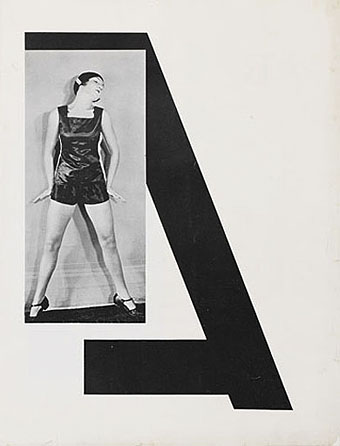
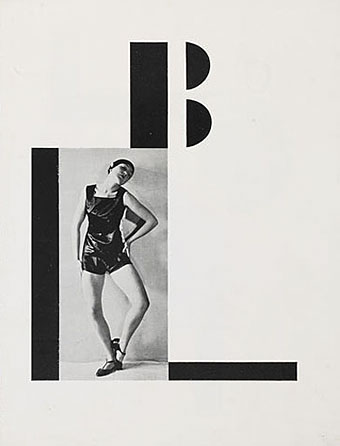
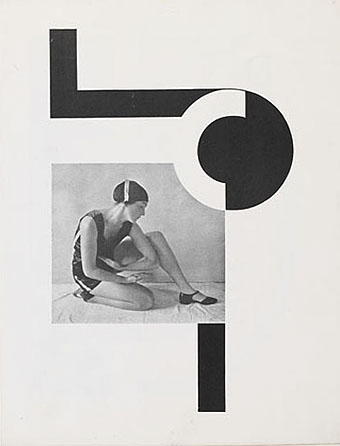
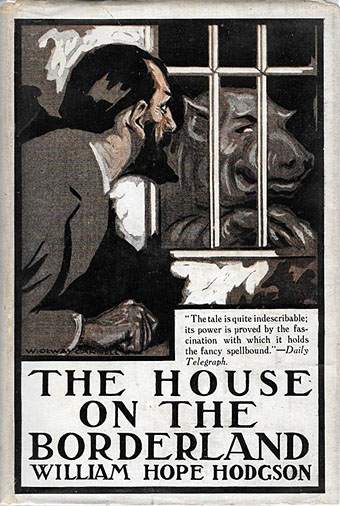
Cover art for the 1921 edition by W. Otway Cannell.
• “An exiled recluse, an ancient abode in the remote west of Ireland, nightly attacks by malevolent swine-things from a nearby pit, and cosmic vistas beyond time and space. The House on the Borderland has been praised by China Miéville, Terry Pratchett, and Clark Ashton Smith, while HP Lovecraft wrote, ‘Few can equal [Hodgson] in adumbrating the nearness of nameless forces and monstrous besieging entities through casual hints and significant details, or in conveying feelings of the spectral and abnormal.’
“‘Almost from the moment that you hear the title,’ observes Alan Moore, ‘you are infected by the novel’s weird charisma. Knock and enter at your own liability.’ The House on the Borderland remains one of Hodgson’s most celebrated works. This new edition features an introduction by Alan Moore, an afterword by Iain Sinclair, and illustrations by John Coulthart.” The long-gestating illustrated edition of William Hope Hodgson’s The House on the Borderland is now available for pre-order from Swan River Press. This is limited to 350 copies so I’d advise anyone interested to order as soon as they can; there’s been a lot of interest in the edition, and with the print run being a small one it’s liable to sell out quickly.
• “Art et Liberté was a movement that came into being in 1938 in Cairo. It was affiliated to Surrealism through contact with André Breton in Paris, and shared Surrealism’s spirit of rebellion and provocation, its desire for dream knowledge and penchant for manifestos.” Marina Warner on the neglected history of Egyptian Surrealism.
• Titan Comics follow their recent collection of Philippe Druillet’s first six Lone Sloane stories with Gail, a book which I don’t think has received an English translation until now.
• Mixes of the week: FACT mix 641 by Alva Noto, a mix by Chris Carter for Bleep/NTS, and Through A Landscape Of Mirrors Vol. I: Sweden by David Colohan.
• 200 years after the first publication of Frankenstein, the city of Bath is to unveil a plaque commemorating Mary Shelley‘s time spent there while writing the book.
• Southern Lord co-founder Gregg Anderson talks to Red Bull Radio about running a record label devoted to avant-garde metal.
• Twelve illustrated dust jackets from Martin Salisbury’s The Illustrated Dust Jacket: 1920–1970.
• At MetaFilter: Links to Hokusai’s drawing guides and similar books.
• Grief (1999) by Tactile | In The Cellar (2005) by Nostalgia | The House On The Borderland (2008) by Electric Wizard
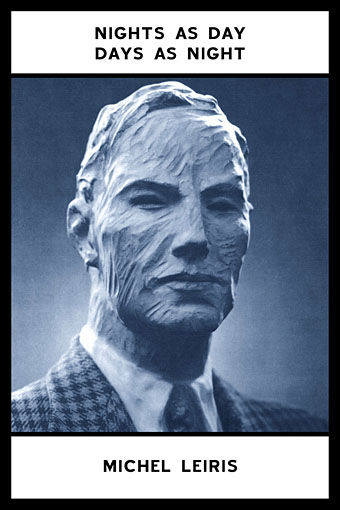
“Le rêve est une seconde vie,” says Gérard de Nerval in the epigraph to the dream journal of Michel Leiris, a collection of oneiric texts published as Nuits sans nuit et quelques jours sans jour in 1961, and which appears this week in a new translation—Nights as Day, Days as Night—from Spurl Editions.
If dreams for Nerval were a second life, for the Surrealists they were a life as important as the waking one, their significance distilled in the declared desire of Max Ernst to keep one eye open on the wake world while the other remained closed and fixed upon the interior. Michel Leiris was a friend of André Masson, and was involved with the Surrealists in the early days until a falling out with André Breton saw him expelled from the “official” ranks. The fatuously doctrinaire Breton seemed to fall out with everyone at some point, and Leiris wasn’t alone in being undeterred by any tinpot Stalinism. Nights as Day, Days as Night is a major Surrealist text, a journal covering the years 1923 to 1960 which may be read as a straightforward transcription of one person’s dream life, or as a series of fragmented narratives, anecdotes and fantasies many of which, in their brevity, operate like condensed fictions. Dreams as raw material for fiction have a long history but are seldom presented en masse in an undiluted form. One problem is that a naked description of a dream is unlikely to be interesting to anyone other than the dreamer unless the description is artfully presented. In his lecture on nightmares, Jorge Luis Borges describes his most terrifying dream—an old Norwegian king appearing at the foot of his bed—which he says was terrifying not because of the appearance of a spectral presence but because of the atmosphere in the room, an atmosphere he found impossible to convey to others.
This quality of incommunicability (or a general lack of interest, since “strange dreams” are universal) may be sidestepped if the dreamer is already noteworthy, as with the case of William Burroughs whose My Education: A Book of Dreams is the most obvious equivalent to Leiris’s collection. Burroughs had been mining his dreams for years, however, so the contents of My Education were already very familiar to his readers when the book appeared in 1995. Leiris has the advantage of novelty, and even more than Burroughs he works consciously to make his dreams interesting to a reader. (There’s also some intersection in the Parisian locations; Burroughs included Paris as one of the omnipresent zones in his personal dream landscape.) As with Burroughs, there seem to be occasions when the transcription turns into outright fictioneering. I’ve tried keeping a dream journal myself a few times, and found it difficult to recall anything more than the merest fragments of most dreams. Leiris is selective—many of the entries are separated by several months—but many of his selections run over several pages, and contain detailed descriptions of sequential events. Unless you’re blessed with exceptional recall, some elaboration would seem inevitable given the elusive nature of dreams and their tendency to quickly evaporate in the bleary-eyed morning. From a Surrealist perspective (a non-doctrinaire one, naturally), any subsequent embellishment might be regarded as a literary parallel to the Ernst intention of keeping one eye open while the other remains closed; the dreams become Surrealist texts collaged from Leiris’s dream life and whatever enhancement he applies to the raw transcription. Many of the shorter transcriptions remain faithful to the abrupt disjunctions of the dream state, replete with sudden changes of location, personality and even reversals from subject to object. Literature has the ability to convey these disjunctions much more accurately than other media. Painting, drawing and collage only ever create a single, static image; film has the advantage of movement but, like other visual media, can’t help but make everything seem all too tangible. In film, animation comes the closest to dreams but still lacks the ability to put you inside the consciousness of the dreamer the way that Leiris’s texts do, fictional or otherwise.
Spurl’s Nights as Day, Days as Night is translated by Richard Sieburth, and features a foreword by Maurice Blanchot. Order it here.